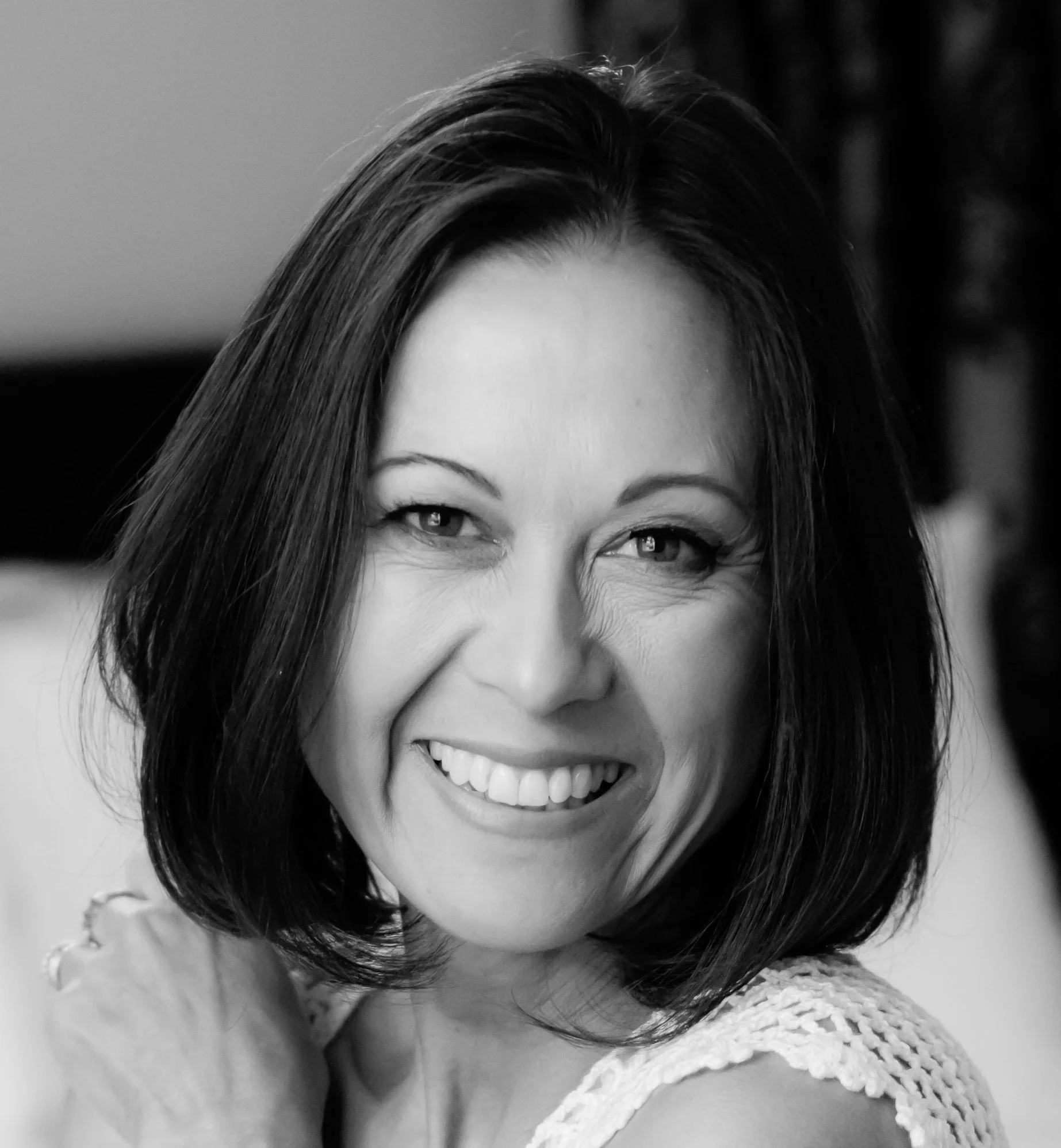THE HORROR!
With Halloween looming, I thought what better time to think about writing horror? And who better to talk to about it than multi-award winning horror writer and editor Lee Murray. (Two Bram Stoker awards just saying...)
I asked Lee some questions and and she generously gave me these invaluable insights into writing that leans towards the dark side....all of which are useful no matter what medium you're working in :-)
Beginner’s Guide, Kathryn Burnett recently sat down with Lee to talk on ‘Writing Horror’.
KB: You’ve had significant success as a horror writer—what first attracted you to the horror genre or darker material?
LM: I always loved reading dark fiction, but when I finally started my writing career in my forties, I got sucked in by that adage “write what you know”. At that time, I’d run 25 marathons and an ultramarathon, and mentored a bunch of people through their first long distance event, so I figured that marathoning was something I ‘knew’ about. So, I wrote a light-hearted reality rom-com tale about a young woman’s marathon attempts to keep her job, her apartment, and her feckless father’s approval, all while unwittingly jeopardising the things that truly mattered to her: her integrity, her partner, and the respect of her best friend. A Dash of Reality wasn’t the first book I released, but it was the first book I wrote: a self-published ‘learner’ book that allowed me to make all those rookie mistakes like getting the wordcount wrong, writing in a dying literary genre, and commissioning a cover that didn’t fit the readership. And while I had a lot of fun writing it and I’m grateful for the lessons it afforded me, I also learned that I didn’t want to write books with plot events like blisters, wardrobe malfunctions, and cupcake deprivation. Great escapism, but it wasn’t going to sustain me. Instead, I wanted to write about the things that kept me up at night, issues like climate change, feminism, racism, and marginalisation. What happens when that big earthquake finally hits? And I think it was a focus on those themes that brought me over to the dark side.
KB: - Why do you think the ongoing popularity of horror endures?
LM: To answer this question, I’d like to quote from Why Horror Seduces, by my friend and scholar, Mathias Clasen, who writes: “Why does horror seduce? why are we irresistibly drawn to the dark side of entertainment, to artworks and interactive experiences designed to produce pleasure through negative effect? Based on our best current knowledge about human nature, the answer is that we have an adaptive need to face the darkness in a safe context. Horror seduces because it so effectively satisfies our appetite for looking into the abyss, for imaginatively facing the very worst that we can conceive.”
Given the multitude of threats facing the world today, horror gives us a safe way to process our fear, and to take hope in seeing those monsters tamed. If you’re interested in the horror research as it applies to horror movies, you can listen in to Mathias’s TED Talk, Lessons from a Terrified Horror Researcher, HERE.
KB: - When you're thinking about a new story what's the first thing you do to start teasing it out?
LM: At this point in my career, I’m lucky enough to have publishers, commissioning editors, and producers approaching me to commission stories, novels, tie-ins, poems, and scripts. In those instances, there is almost always a concept, world, theme, format, and some other criteria or constraint associated with the project, so those details become the jumping off point for my ideas. This is a good thing, because if someone says to me ‘write anything you like’, that cornucopia of choice can be paralysing. Having boundaries narrows my thinking. And if I want those publishers, editors, and producers to come back and buy more stories from me, then I need to deliver something that fits their vision, and, if possible, subverts and expands on that notion in a fresh and engaging way. There’s a lot of interest in New Zealand narratives from international editors, so getting a New Zealand focus or theme into your story can be a useful point of difference. Over the past couple of years, I’ve been exploring my Asian-Kiwi heritage in story, and editors have been keen to see more of that from me, so rather than the ‘write what you know’ rule, perhaps focus on writing “what excites and intrigues you’ and see where the journey takes you. It’s important to pay attention to those other constraints laid down by an editor, too. For example, if you have a complex story idea with sufficient conflict and plot events to fill a trilogy, you’re going to be hard pushed to squeeze all those adventures into a short story of 3000-words, so you need to figure the scope of the writing project into the equation. I try not to go for the first idea that pops into my head either, because it’s likely to be the same idea that pops into everyone else’s head. Once I have a solid idea in mind, I run it past a couple of trusted colleagues (my critique group) to be sure it has legs. With their feedback, I might develop the idea further before I finally go off and write it. Of course, there are no guarantees that the story won’t become some other monster while I’m writing it, but that’s the general start process! If you’re early in your career, you can simulate this process, by seeking out and writing for submission calls and competitions in your genre. Straight away, the venue will provide you with a specific theme or world to write in (your prompt), a wordcount, and a deadline. (Always check the guidelines for payment—because unless the venue is a charity you believe in, then you should be paid for your work—and consider what rights the editor is requesting). By sifting through submission calls, you’ll also gain an understanding of trends in your genre, reputable publishers, and editors of note, and by writing and submitting stories, you are building a body of work which you can polish and develop later. Even if your work isn’t accepted (and there are many reasons for this, mostly involving budget and space), you may be lucky enough to get some important feedback from the editor, which you can use to inform and improve your work. If we’re talking about a high-investment project like a novel, then narrowing down your focus is helpful. That might be as simple as checking the wordcount for your genre: a 300,000-word novel for middle graders is going to be a hard-sell, for example. Do you want your story to have sequel potential? What’s already out there? These parameters will help to shape your story idea. Mostly, I think when you are working on a larger project requiring months or even years of your life, then make sure you believe in the story, that it makes your blood sing, because if it doesn’t excite you now, then it’s hardly going to excite you three years from now when you’re grappling with a plot hole or bored with your character—and that lack of vibrancy will probably show in the writing.
KB: - What advice would you give to a new horror writer?
LM: This is the answer I gave horror writer Tim Waggoner (Stargate, Supernatural, Shadow Watch, Dragonlance, Kingsman, Dungeons and Dragons), when he asked me this same question, and which appears in Writing in the Dark, his Bram Stoker Award®-winning text on writing horror:
“Think of it like a Mad Hatter’s tea party. No room at the literature table? Sit down anyway. Take the rabbit hole to the underworld. Conjure shrink-grow monsters, evil queens, the perfidy of time, and lonely, spiralling madness. Choose chaos as a ruling principle. Ask the hard questions. Say what you mean. Talk when you want to. Debate the intricacies of language. Hide the bodies of your friends in teapots. Cut off their heads. Reference Poe. And drink more of the beverage of your choice.”—Lee Murray, double Bram Stoker Award winner and author of Grotesque: Monster Stories.
KB: - What makes for a good monster?
LM: Simply put, a monster is any uncanny thing (real or supernatural) that subverts the course of natural order of things. Fictional monsters tend to be ugly, violent, unpredictable, cruel, and different from us. However, to write effective horror, it isn’t the monster itself that is important, it’s your character’s reactions to the monster which allow us to elicit fear. Your ‘monster’ might be a rustling newspaper, but your character, sitting alone in the darkness at the bus stop, doesn’t know that, for example. When you get your reader into the head of your character, and allow them to experience that fear, then even a rustling newspaper is an effective monster. Filmmaker Guillermo del Toro says that “monsters are living breathing metaphors.” Many of these metaphors are familiar to us: zombies as the pandemic, kaiju representing nuclear war and globalisation, Frankenstein as a symbol of scientific hubris, for example. So, given that there are always new viruses, global threats, and scientific advances to subvert the natural order of things, the opportunities for creating new monsters seem endless.
Lee Murray is an author, editor, screenwriter, and poet from Aotearoa-New Zealand. She is the winner of 12 Sir Julius Vogel Awards, 3 Australian Shadows, two Bram Stokers, and a Shirley Jackson Award, and has been a finalist in the Aurealis, British Fantasy, Imadjinn, Skoutz (Germany), and Ladies of Horror Fiction Awards, among others. Her work includes military thrillers, the Taine McKenna Adventures, supernatural crime-noir series The Path of Ra (with Dan Rabarts), and short fiction collection, Grotesque: Monster Stories. Lit Reactor’s Editor of the Year for 2021, Lee is the curator-editor of eighteen volumes of speculative fiction, among them Black Cranes: Tales of Unquiet Women (with Geneve Flynn). Other works include non-fiction title Mark My Words: Read the Submission Guidelines and Other Self-editing Tips with Angela Yuriko Smith, and several books for children. She is co-founder of Young NZ Writers and of the Wright-Murray Residency for Speculative Fiction Writers, HWA Mentor of the Year for 2019, NZSA Honorary Literary Fellow, and Grimshaw Sargeson Fellow for 2021. Lee’s first poetry collection, Tortured Willows, a collaboration with Angela Yuriko Smith, Christina Sng and Geneve Flynn was released in October 2021. Read more at https://www.leemurray.info/
Refs:
Clasen, Mathias Why Horror Seduces, Oxford University Press, 2017.
Clasen, Mathias, Lessons from a Terrified Horror Researcher, https://www.ted.com/talks/mathias_clasen_lessons_from_a_terrified_horror_researcher/transcript?language=en
Del Toro, Guillermo. Monsters are living breathing, metaphors. Big Think. YouTube, 14 June 2011. https://www.youtube.com/watch?v=bXBU0X_LuQI
Waggoner, Tim, Writing in the Dark, Raw Dog Screaming Press, 2020. http://rawdogscreaming.com/books/writing-in-the-dark/






